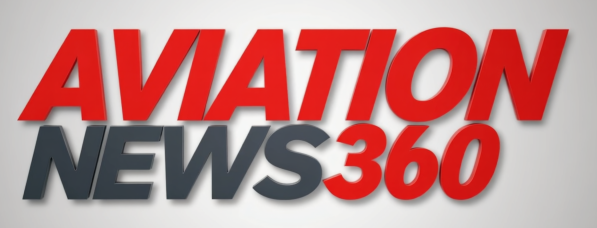Jennifer Droppers and Katlyn Hilferty of Morgan, Lewis & Bockius LLP write that regulatory turbulence is generating both challenges and opportunities for the MRO sector.
The global MRO sector plays a critical role in the aviation industry, ensuring the safety and reliability of aircraft across the globe. While the intricate web of global regulatory requirements governing the aircraft parts supply chain has always required MROs to remain vigilant, adaptive and forward-looking to maintain compliance and take advantage of rapidly evolving technologies in the market, this has never been more true than now.
To realise the opportunities from digital transformation, sustainability initiatives and regional and sectoral growth, MROs must proactively focus on compliance within an increasingly complex regulatory and geopolitical trade environment. Whether they are adhering to FAA and EASA requirements, complying with requirements governing the use of technologies such as generative AI, navigating new supply chain challenges or adapting to changing tariffs and global trade policies, it is critical that MROs monitor and anticipate changes in the regulatory environment.
Recent or anticipated regulatory changes include the following:
- The 2025 amendment to the US-EU bilateral aviation safety agreement (BASA) earlier this year to require US‑based repair stations with EASA Part 145 approvals to establish, implement and maintain a safety management system (SMS)
- The formal adoption of the European Union’s AI Act, with key compliance dates that will impact a range of AI applications
- New and rapidly evolving global tariff policies impacting the aircraft parts supply chain, including the recent Section 232 investigation into US imports of commercial aircraft, jet engines and their parts.
To effectively manage these regulatory complexities and take advantage of the increased demand in the market from significant backlogs, MRO businesses must adopt a proactive approach to compliance, working closely with business, commercial and legal teams.
Among the most immediate challenges for the industry is the swiftly changing tariff landscape that is reshaping global trade dynamics, including the aviation supply chain. Over the last few months, the US government has imposed 25% tariffs on Canadian and Mexican origin products (later exempting goods qualifying for duty-free treatment under the US-Mexico-Canada Agreement), imposed global reciprocal tariffs on all foreign imports (currently paused at 10% for 90 days), increased and then lowered tariffs on Chinese-origin goods, and increased tariffs on global imports of steel, aluminium, and derivative products.
Other nations have followed suit, responding to the new US tariffs with retaliatory or responsive tariffs on US exports. These developments have resulted in significant fluctuations to prices based on rapid tariff adjustments, which makes long-term financial planning difficult.
“It is critical that MROs monitor and anticipate changes in the regulatory environment”
New tariffs are particularly disruptive for the US aviation industry, which had historically enjoyed duty-free treatment under the terms of the 1980 Agreement on Trade in Civil Aircraft, a plurilateral agreement within the World Trade Organisation that eliminated tariffs on civil aircraft, engines and related parts and components for signatory nations. While there are exceptions from the new US tariffs for certain aviation products, these are limited, and companies may now be facing levies that they have not previously incurred.
Significantly, in May, the US government initiated an investigation into imports of commercial aircraft, jet engines and parts into the US under Section 232 of the Trade Expansion Act. MROs and other interested parties have until 3 June to provide comments to the US Department of Commerce on the investigation. The investigation and review of comments received from industry can take up to 270 days.
At the end of its investigation, the Commerce Department will prepare a report to the administration focusing on whether imports are in such quantities or under such circumstances as to threaten to impair US national security and, if so, recommending actions to address the threats.
Depending on the investigation’s outcome and if the administration concurs with the report recommendations, this could lead to increased tariffs, quotas (import limitations) or other restrictions on US imports of such aircraft and parts from all countries as well as retaliatory actions from other nations. As an example, if tariffs are imposed, a US MRO using a replacement part from outside of the US may face additional tariffs (likely 25%, based on previous rates imposed by the administration in other Section 232 investigations) to acquire the part and import it into the country.
In response to tariff uncertainty and increases, MROs in the US or other countries will need to anticipate and adapt to offset higher costs that burden their business operations. This may take the form of exploring alternative suppliers in the US or other countries, placing a greater emphasis on component repair and overhaul rather than replacement, adopting greater efficiencies to combat supply chain delays, or shifting repair locations to facilities located in regions less impacted by tariffs, such as Mexico (currently enjoying duty-free treatment under the US-Mexico-Canada trade agreement) or the UK (which signed the first trade deal with the US during the 90‑day pause in reciprocal tariffs).
Any proposed operational changes by the business teams should be closely monitored with legal oversight to ensure that they are undertaken in compliance with requirements and that any ancillary consequences are addressed. For example, before shifting suppliers or operations to another country, MROs should ensure that they are informed about the impacts of the applicable tariff regime. Before shifting suppliers or locations, MROs should also be mindful of other applicable regulatory requirements associated with changes, including compliance with SMS/QMS programmes and licensing requirements by aviation authorities. Because noncompliance carries significant financial, commercial and liability risks, it is essential that MROs partner with their legal advisors to navigate requirements.
This article is published with permission from the authors and Morgan, Lewis & Bockius LLP which retains copyright.
This feature was first published in MRO Management – May/June 2025. To read the magazine in full, click here.
Source link
[aviation news]
Share this content:


